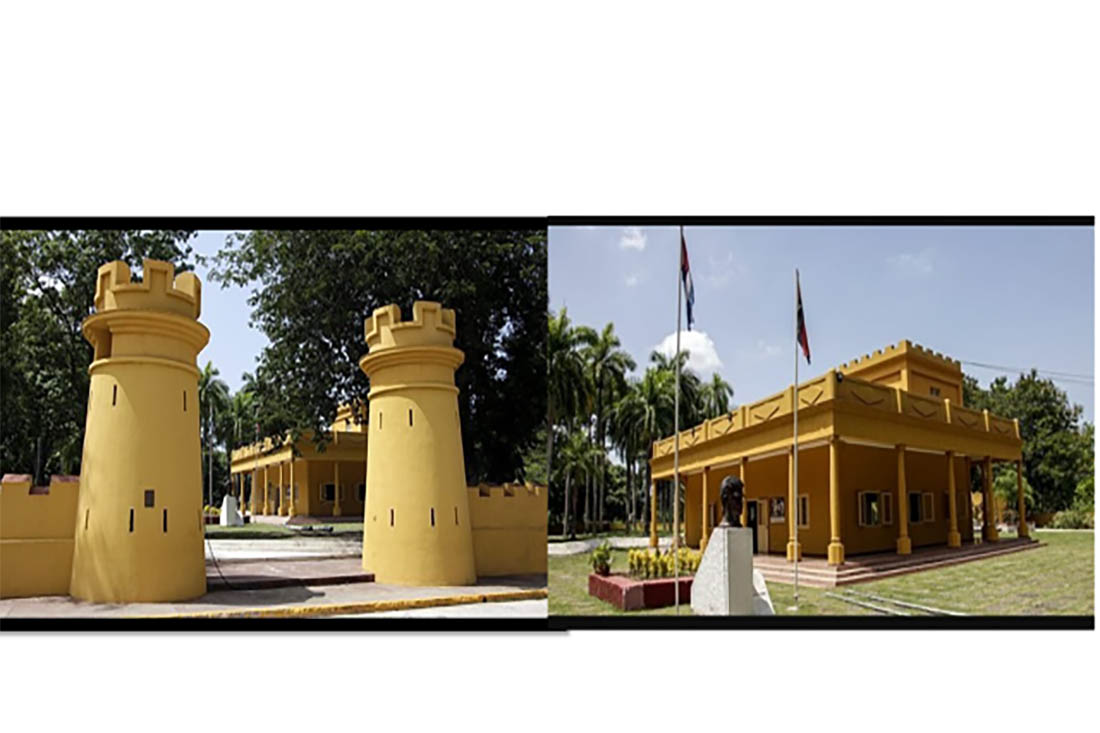On the morning of Santa Ana, in the birthplace of Céspedes and Perucho Figueredo, a group of young people, simultaneously with the assault on the Moncada barracks in Santiago de Cuba, shook the city of Bayamo by assaulting the then Carlos Manuel de Céspedes barracks. Who were these young men?
The feat was devised from the capital with Fidel as leader, with the aim of overthrowing Fulgencio Batista. Raúl Martínez Arará, Antonio (Ñico) López, Pedro Celestino and Hugo Camejo traveled to Bayamo, some by cars, others by train.
Under the command of Raúl Martínez Arará, who directed the assault on this barracks, he had to enter in the company of Elio Rosete masked as soldiers of Batista’s army. The mission was to disarm the posts and facilitate the entry of the rest of the young people who were staying at the Gran Casino, two blocks from the barracks, rented by Renato Guitar from Santiago under the pretext of a chicken business, which was used to accommodate the young people who would lead the action.
According to historian Mailenys Oliva Ferrales, on July 25th, Ramiro Sánchez and Rolando San Román transferred three suitcases with weapons, 22-gauge rifles, 12- and 16-gauge shotguns, and some pistols and revolvers on the train.
Element of surprise
The much-needed element of surprise failed. In a published interview, museologist Elena Martínez Martínez stressed that:
Elio did not keep his word and did not lead the insurgents to the barracks. Tactics had to be changed and instead of entering through the main entrance, the group would enter through the back protected by wire fences. Upon entering they collide with wooden bowls, cans and garbage, which alerted the guard. Nervously, one of the members of the group fired his gun and a shootout began that lasted 15 to 20 minutes.
In the confrontation there were no deaths, only one wounded Gerardo Pérez Puelles. But after Antonio Ñico López retreated near San Juan Park, he killed Sergeant Gerónimo Suárez. This action that had repercussions in a retaliation for each one dead soldier 10 revolutionaries should be left without life.
The cost of revenge
Among the victims, Mario Martínez, killed in the barracks, José Testa captured on a bus, Hugo Camejo and Pedro Véliz, while trying to escape to Manzanillo, were killed.
At the Ceja de Limones farm, the bodies of Pablo Agüero, Luciano Camejo, Rafael Freire and Lázaro Arroyo were found.
Killed:
Victims of the retaliation were Mario Martínez Arará, José Testa Zaragoza, Pablo Agüero Guedes, Rafael Freyre Torres, Lázaro Hernández Arroyo, Luciano González Camejo, Hugo Camejo Valdés, Pedro Véliz Hernández, Ángel de la Guardia Guerra Díaz, Rolando San Román de la Llana (these last ones were found among the Moncada dead, inexplicably).
Participants
The participants in total were: Antonio López Fernández, Calixto García Martínez, Ramiro Sánchez Domínguez, Antonio Darío López García, Adalberto Ruanes Álvarez, Raúl Martínez Arará, Armando Arencibia García, Orestes Abad Lorenzo, Gerardo Puelles-Valmaseda, Rolando Rodríguez Acosta and Orlando Castro. Garcia.
Judged and convicted
Those tried and convicted were Andrés García Díaz, Enrique Cámara Pérez and Agustín Díaz Cartaya (author of the July 26 Hymn), Pedro Celestino Aguilera González, the latter tried and acquitted.
Significance of the facts
Certainly, this action simultaneously with the assault on the Moncada barracks marked a milestone in the stage of the struggle for national liberation, and above all for the state of consciousness at the level of the people, although from a military perspective the action was unsuccessful.
Current status of the property
Today, the occupied area is known as the Ñico López Park-Museum and includes the construction called Sala de los Asaltantes. In its showcases are objects that belonged to the soldiers of the Batista army; of the young assailants are a buckle, an identity card, a philharmonic, books, among other objects of interest donated by the survivors. It is a space that keeps snapshots of a segment of Cuban history.
Bibliography
Oliva, Mailenys (2020) “Bayamo y el asalto que estremeció la historia”. Granma digital, 24 de julio de 2020.
Padrón, Abel y Lisandra Romero (2019) “Bayamo y el cuartel de la Patria”. Cubadebate. 16 de julio de 2019
Translated by: Aileen Álvarez García






